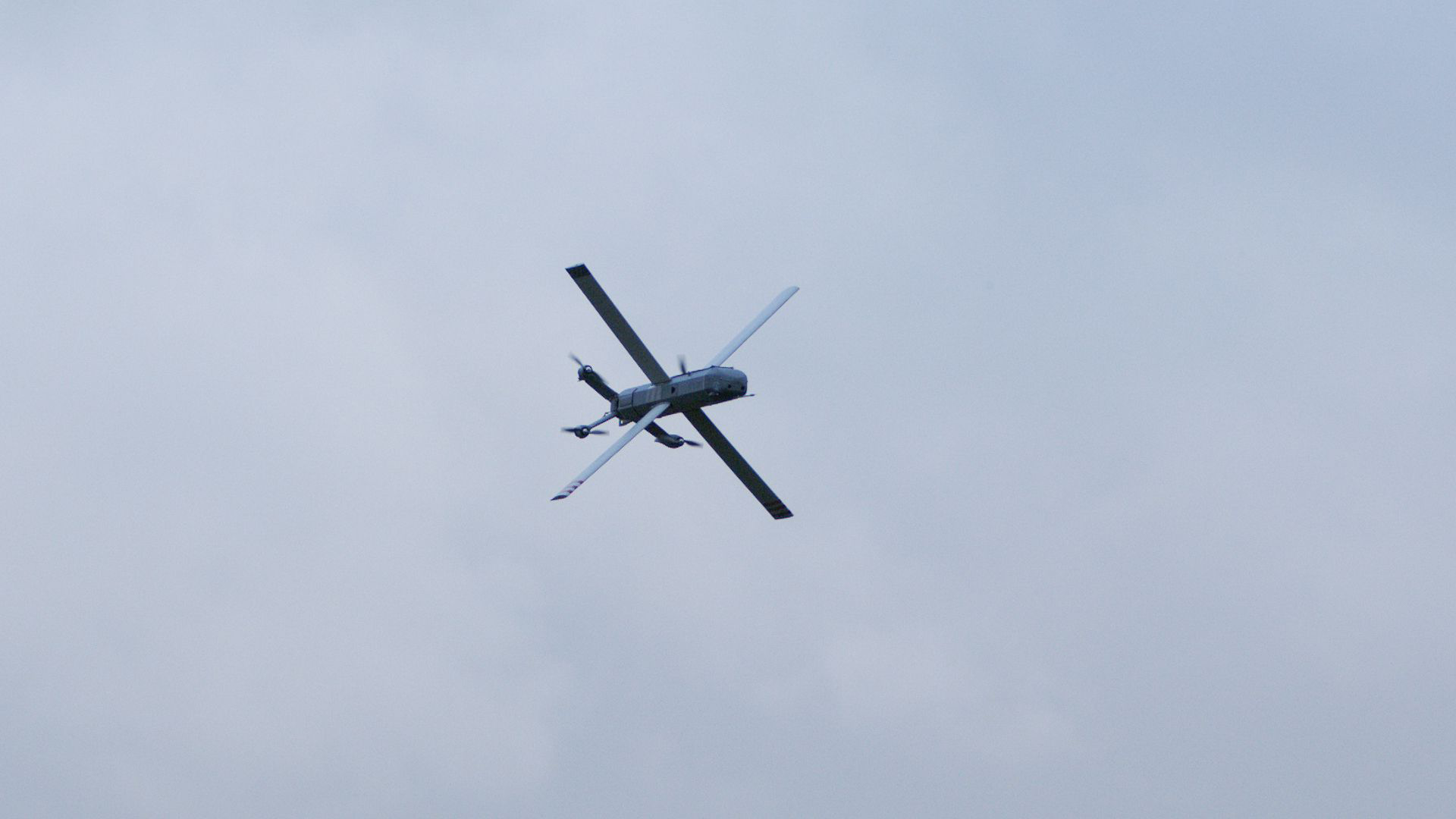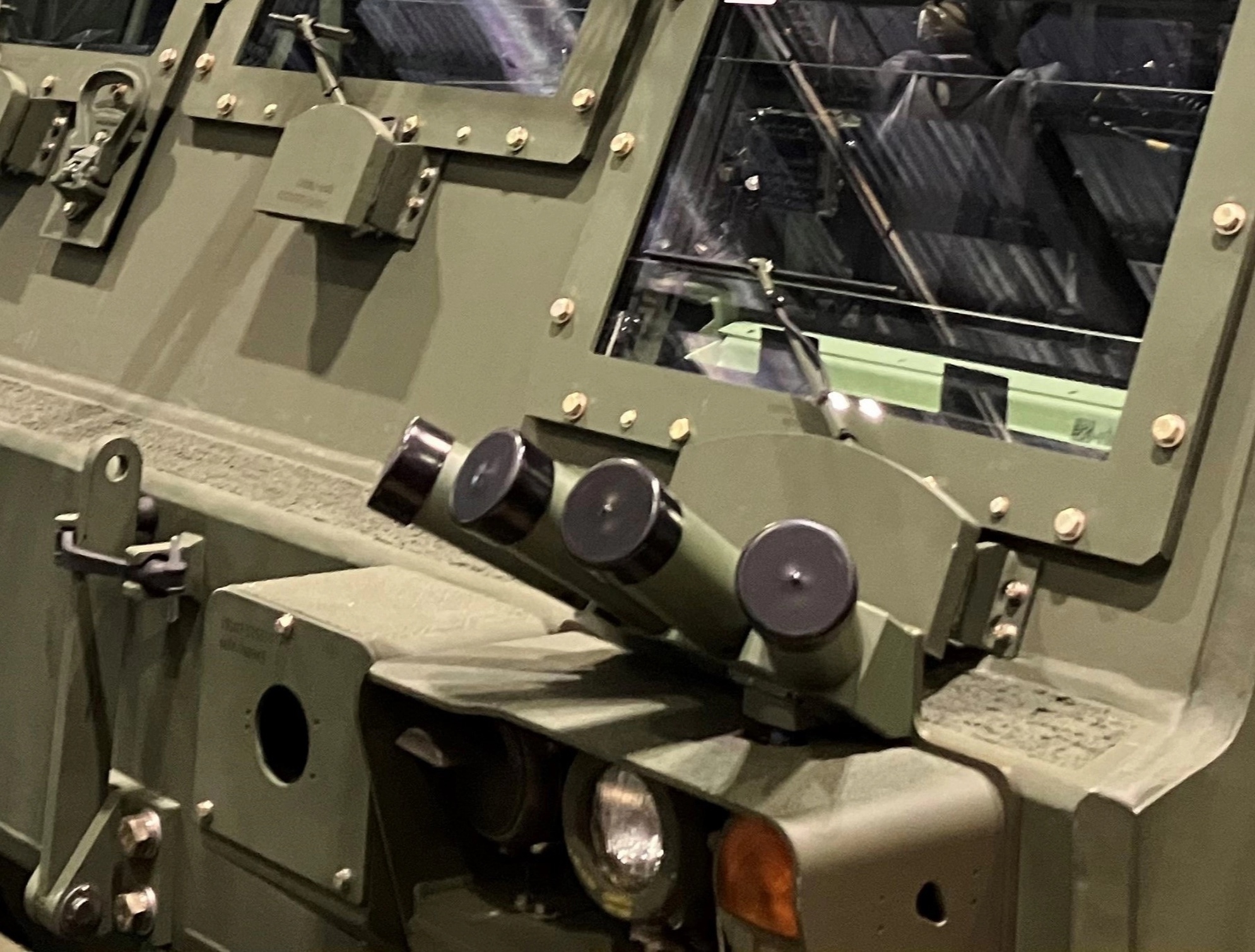HX-2: Helsing releases details of AI-enabled loitering munition
Helsing, the defence tech company has launched the HX-2, a new AI-enabled loitering munition at a ceremony in London on the 2nd December. The launch was announced in concert with the British Government’s new Defence Industrial Strategy, as well as the company’s plans to invest in a new factory for the HX-2 in the UK.
The munition has been developed to be produced and deployed at scale and at a lower cost than “conventional systems,” which may be a reference to anti-tank guided missiles or other long-range precision strike assets. “With HX-2, we are creating a new smart effector category that combines mass, autonomy and precision. Individual HX-2s can reliably engage armored targets in highly contested environments. When deployed along borders at scale, HX-2 can serve as a powerful counter invasion shield against enemy land forces,” Helsing co-founder Niklas Köhler said.
“It’s great to see Helsing leading the way by establishing its factories of the future here in the UK, to mass-produce tens of thousands of low-cost but highly capable AI-enabled systems,” John Healey, the UK’s Secretary of State for Defence added. The new strategy aims to strengthen the nation’s defence sector through increased investment and innovation, and by prioritising British companies to secure and protect supply chains. It also aimed at strengthening deterrence by demonstrating that the UK’s domestic industry is capable of sustaining a long war.
Helsing also states that the HX-2 is in production and the core technology already in use in Ukraine, which together with the defence minister’s statement indicates that there are significant orders for the munition and that production will be expanded from the UK. Ukrainian sources have indicated that as many as 4,000 HX-2s may be on the way to Ukraine.
Tech profile: HX-2
The HX-2 is an X-wing loitering munition with a set of four large wings at the front of the munition body and four smaller wings each carrying a propeller at the rear of the body. It has a range of 100 km and a top speed of 220 km/h and a weight of 12 kg. It appears to have an electro-optical sensor at the front of the munition’s body and can carry a range of lethal payloads including armour-piering, anti-structure, and general purpose munitions. It is AI-enabled and can conduct missions autonomously in the presence of adversary jamming, which would normally bring a manually controlled drone down. This likely indicates that the HX-2 is able to navigate autonomously and detect a target using its onboard sensors and AI algorithms. Helsing also states that updates to the software that powers the munition can be implemented whilst it is in the air, and that it is designed to be networked with the company’s Altra software platform to conduct coordinated swarm strikes.
Helsing recently completed an experiment with General Dynamics UK to integrate the Altra stack onto an Ajax reconnaissance vehicle. Without changing the vehicle’s sight, it gave the vehicle crew the ability to detect targets using AI and pass target metadata to the Athena command and control vehicle where it was populated into the UK’s battle management system. This type of capability – where a ground vehicle is able to detect and designate targets using its existing sights before passing that target off to another effector – would enable western forces to quickly detect and engage targets using a variety of weapons. It is often referred to as any sensor, any shooter.
Calibre comment
The HX-2 is similar in shape and weight to the Russian Lancet-3M, which also weighs 12 kg and has a range of around 80 km with a speed of 160 km/h. The pro-Russian site Lostarmour has documented more than 2,600 uses of the Lancet-3M in Ukraine, it is often used to engage Ukrainian howitzers and armoured vehicles. Russia has averaged 100 Lancet uses per month with a peak of 300 in May this year. The munition has proven to be very effective in degrading Ukrainian artillery and striking systems whilst on roads in particular. However, it does – at times – appear to lack lethality as a result of its comparatively light 3 kg warhead. This may not be an issue for HX-2, especially if its munitions are purpose built for use in loitering munitions.
While this type of munition certainly offers immense value for an armed force, there are many questions to overcome in terms of where these systems sit within a formation. They are, in some senses, a tactical munition designed to engage targets within the tactical battle space. However, they are also an operational capability and one that can only be deployed from behind the frontline, which indicates that a new type of unit would be required to deploy them. The case is clearer for larger drones like the AKINCI from Turkey’s Baykar, which is best-placed as a separate asset to be deployed like an aircraft. However, a loitering munition is essentially a precision strike asset that needs to be embedded within a joint force to be fully exploited. This may prove challenging for countries like the UK, where it is almost impossible for the Army to fly any of its drones in British airspace.
By Sam Cranny-Evans, published 5th December 2024.

Sign Up for Updates!
Get insider news, tips, and updates. No spam, just the good stuff!





